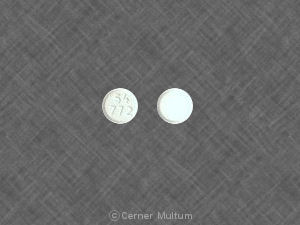Dihydrotachysterol Dosage
Applies to the following strengths: 0.125 mg; 0.2 mg/mL; 0.2 mg; 0.4 mg
Usual Adult Dose for:
Usual Pediatric Dose for:
Additional dosage information:
Usual Adult Dose for Hypocalcemia
Initial dose: 0.25 to 0.8 mg orally once a day for several days.
Maintenance dose: 0.2 to 1 mg orally once a day.
Usual Adult Dose for Hypoparathyroidism
Initial dose: 0.8 to 2.4 mg orally once a day for 4 days.
Maintenance dose: 0.2 to 1 mg orally once a day.
Usual Adult Dose for Hypophosphatemia
Initial dose: 0.8 to 2.4 mg orally once a day for several days.
Maintenance dose: 0.2 to 1 mg orally once a day.
Usual Adult Dose for Osteoporosis
0.6 mg orally once a day. Has been used in conjunction with fluoride and calcium.
Usual Adult Dose for Renal Osteodystrophy
0.1 to 0.6 mg orally once a day.
Usual Adult Dose for Rickets
0.5 mg orally one time or 13 to 50 mcg/day until healing occurs.
Usual Pediatric Dose for Hypoparathyroidism
Neonate Dose: 0.05 to 0.1 mg orally once a day.
Infant and Child Dose:
Initial dose: 1 to 5 mg orally once a day for 4 days.
Maintenance dose: 0.5 to 1.5 mg orally once a day.
Usual Pediatric Dose for Renal Osteodystrophy
0.1 to 0.5 mg orally once a day.
Usual Pediatric Dose for Rickets
0.5 mg orally one time or 13 to 50 mcg/day until healing occurs.
Renal Dose Adjustments
Data not available
Liver Dose Adjustments
Data not available
Dose Adjustments
May increase at 4 to 8 week intervals.
Precautions
Dihydrotachysterol should be withheld if hypercalcemia develops.
Dialysis
Vitamin D and its metabolites are not dialyzable.
Other Comments
Patients should receive adequate calcium during dihydrotachysterol therapy. Serum calcium should be monitored 1 to 2 times a week during dosage titration, and approximately once a month after stabilization. Serum calcium levels should be maintained between 9 to 10 mg/dL.
More about dihydrotachysterol
Related treatment guides
Further information
Always consult your healthcare provider to ensure the information displayed on this page applies to your personal circumstances.

